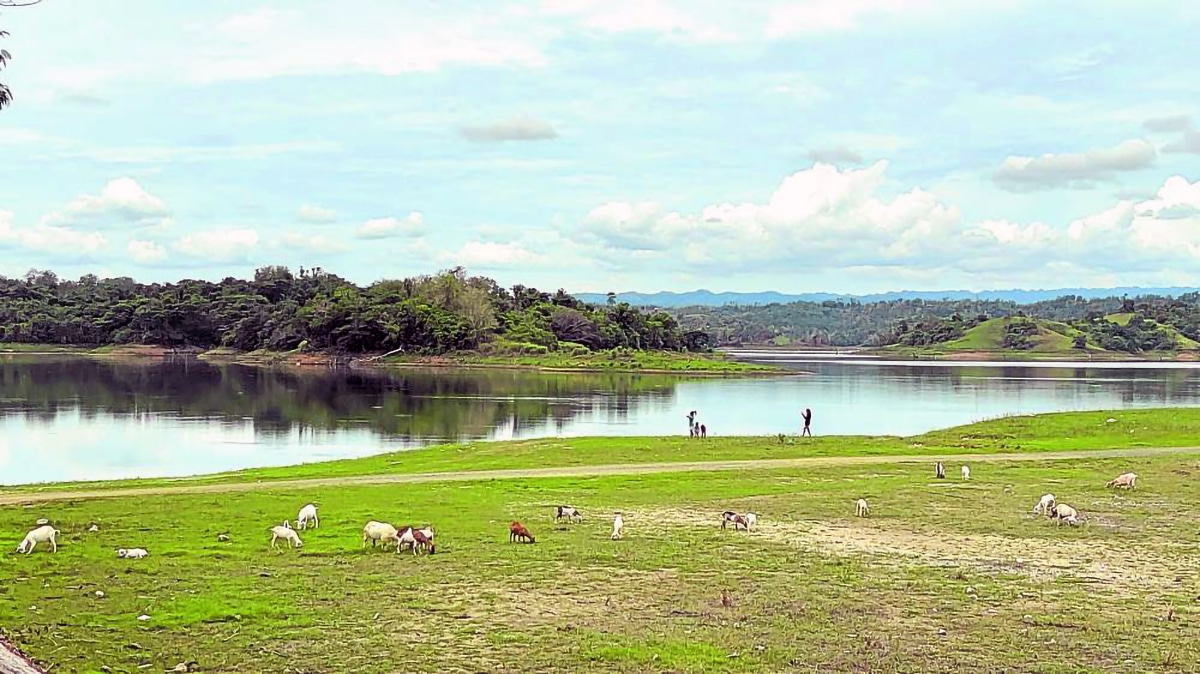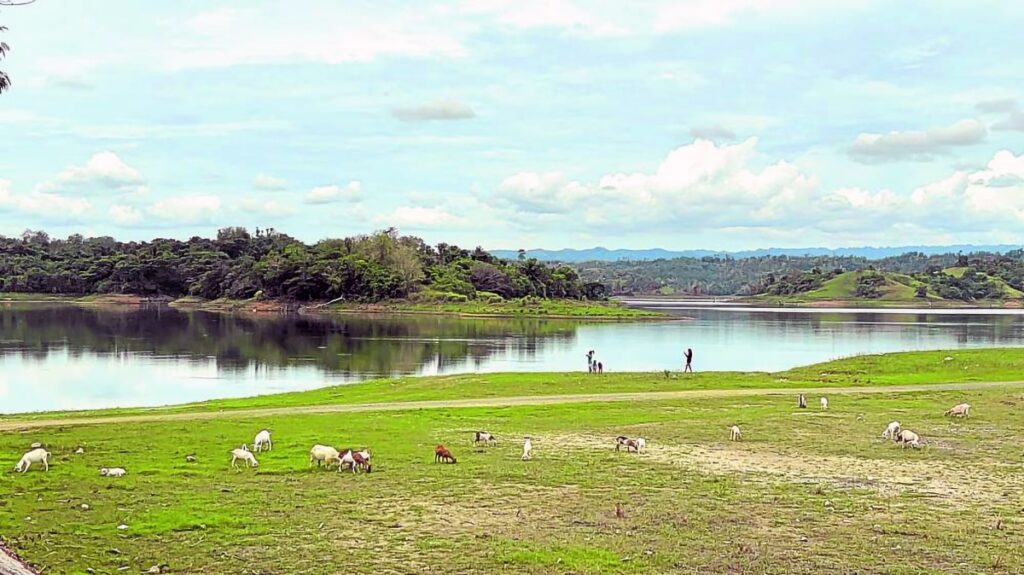
CRITICAL LEVEL. The water level at Bayongan Dam in San Miguel town, Bohol, has dropped to a critical level in this June 16 photo, as farmers await heavy rains following the weather bureau’s declaration of the end of El Niño. | LEO UDTOHAN
UBAY, BOHOL — The start of the rainy season in the country has been officially declared but farmers in Bohol province are still waiting for rains to pour in their parched rice fields.
Reynaldo Auza, a 77-year-old farmer from Barangay San Carlos in Talibon town, has been praying for rain.
“There was a drizzle last week but it was too short for the water to seep through the soil,” he told the Inquirer.
READ: Bohol under state of calamity due to El Niño
Auza and other farmers have been worried about where to get water because the water in the Talibon Small Reservoir Irrigation has dropped to a critical level.
The situation is similar in other dams in Bohol where water is scarce.
The Malinao Dam in Pilar town, the oldest water reservoir in the province, is short of water. It supplies 4,740 hectares of rice fields in the towns of Pilar, Alicia, Ubay, San Miguel, and Dagohoy.
READ: Central Visayas suffers P1.7B loss in agriculture due to El Niño
The Capayas Dam in Ubay town which provides water to 1,160 ha of rice fields has water below its normal operating level.
The Bayongan Dam in the town of San Miguel is also running out of water.
The San Vicente Small Water Impounding Project in Ubay, Bohol in this photo taken on June 15, 2024. | Provincial Government of Bohol FB
Lack of rain
Farmers have been complaining about the lack of rain that has affected at least 533.5 ha of rice fields in Bohol, considered the rice bowl of the Central Visayas region.
Of at least 47,000 ha of rice fields in Bohol, 24,000 ha are irrigated through dams, small water catchments and diversionary canals. The rest rely on rain.
Acting provincial agriculturist Larry Pamugas said the El Niño weather phenomenon’s damage to agriculture and fisheries has reached P459 million in 41 of 47 towns and one city in the province.
State of calamity
Bohol has been under a state of calamity due to the impact of the prolonged dry spell and drought since May 21.
Due to the water shortage, the provincial government had authorized cloud seeding operations starting June 11 despite an objection from Board Member Mimi Boniel.
In a privilege speech last week, Boniel urged the provincial government to stop the operations because of the onset of the rainy season.
However, Pamugas and the Bohol Cloud Seeding Task Force said the recent rains in Bohol were not enough to save farms.
“Based on our present observation and data from the National Irrigation Administration, [the water is] not enough,” Pamugas said.
Cloud seeding
He said farmlands were not the only ones affected by the lack of rainfall as its impact was also felt by livestock, poultry, and inland fishery businesses in the province.
According to Pamugas, heavy rains are also important to sustain Bohol’s 59,558 ha of forestland and its 16 watersheds.
When the province experienced drought in 2016, Pamugas said they had to resort to cloud seeding to bring relief to El Niño-stricken areas and reduce agriculture damage and crop losses.
Pamugas said cloud seeding was part of interventions to help restore water levels and support farmers and communities dependent on these resources.
Just recently, Dr. Anthony Damalerio, the head of the Bohol Provincial Disaster Risk Reduction and Management Office (PDRRMO), has proposed to increase the cloud seeding allocation from P2.5 million to P5 million.
Damalerio said this is among the items for discussion during the next PDRRMO meeting on June 26.
In a video shared by the Bohol Provincial Government, Pamugas said that the P2.5 million allocation was not enough. He added that the standard set by the Department of Agriculture for the purpose is P5 million.
